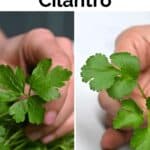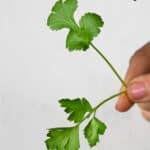Parsley vs Cilantro: What’s the Difference?
This post may contain affiliate links. Please read our disclosure policy.
They’re green, they’re herby and they’re very easily mistaken for each other – today, we’re putting parsley vs cilantro under a microscope.
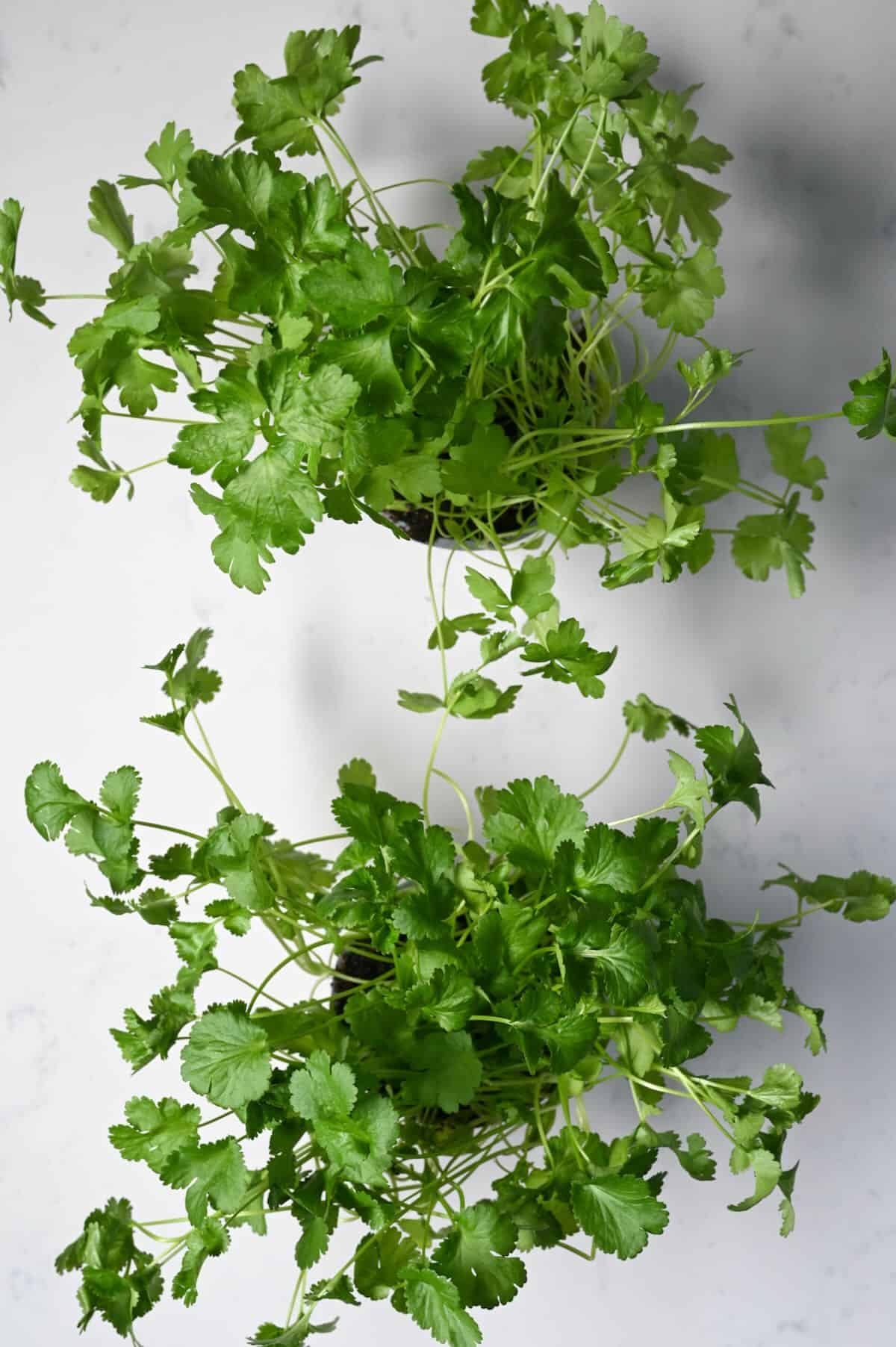
Are you a cilantro lover or a hater? Do you pass on the parsley? Or are you the kind of person (like me) who can’t get enough of the green delights their herb garden keeps producing? If you are, you’re definitely the best kind of person (I’m not at all biased).
But it’s easy to get parsley and cilantro confused – and it doesn’t help that they look a lot alike. These two herbs are both derived from the same core family – but there are a few key differences that keep them as cousins, not twins.
Want to save this recipe?
What Is the Difference Between Parsley and Cilantro?
Both kings of the herb garden, cilantro and parsley can seem very similar on the surface. They both have green leaves that are distinctively shaped and both are most frequently used to bring flavor to food. But these fresh herbs, cultivated around the world for thousands of years and frequently used in medicine as well as cooking, have some pretty notable differences in their look, smell, and taste.
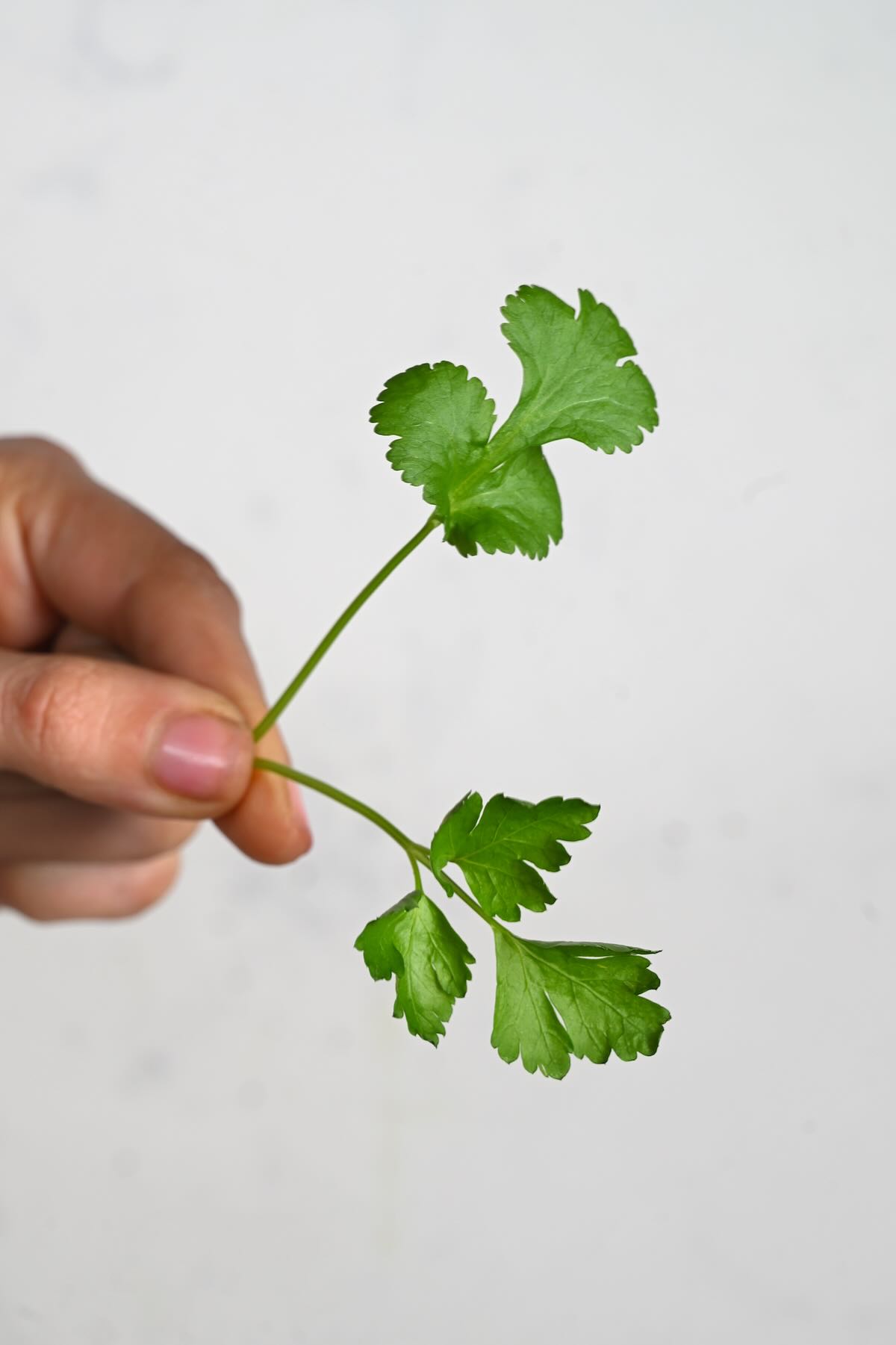
What Is Parsley
Native to the shores of the Mediterranean, parsley (petroselinum crispum) is a sun-loving herb derived from a flowering plant. It’s no wonder the most famous varieties are French and Italian – separated by the different shapes of their leaves. Italian parsley has flat leaves, while French is curly-leaf parsley.
More frequently used for cooking, it has a bitter, peppery taste and a grassy parsley smell that works best when used as a garnish, integrated into sauces and soups, or used to season dishes with a subtler flavor.
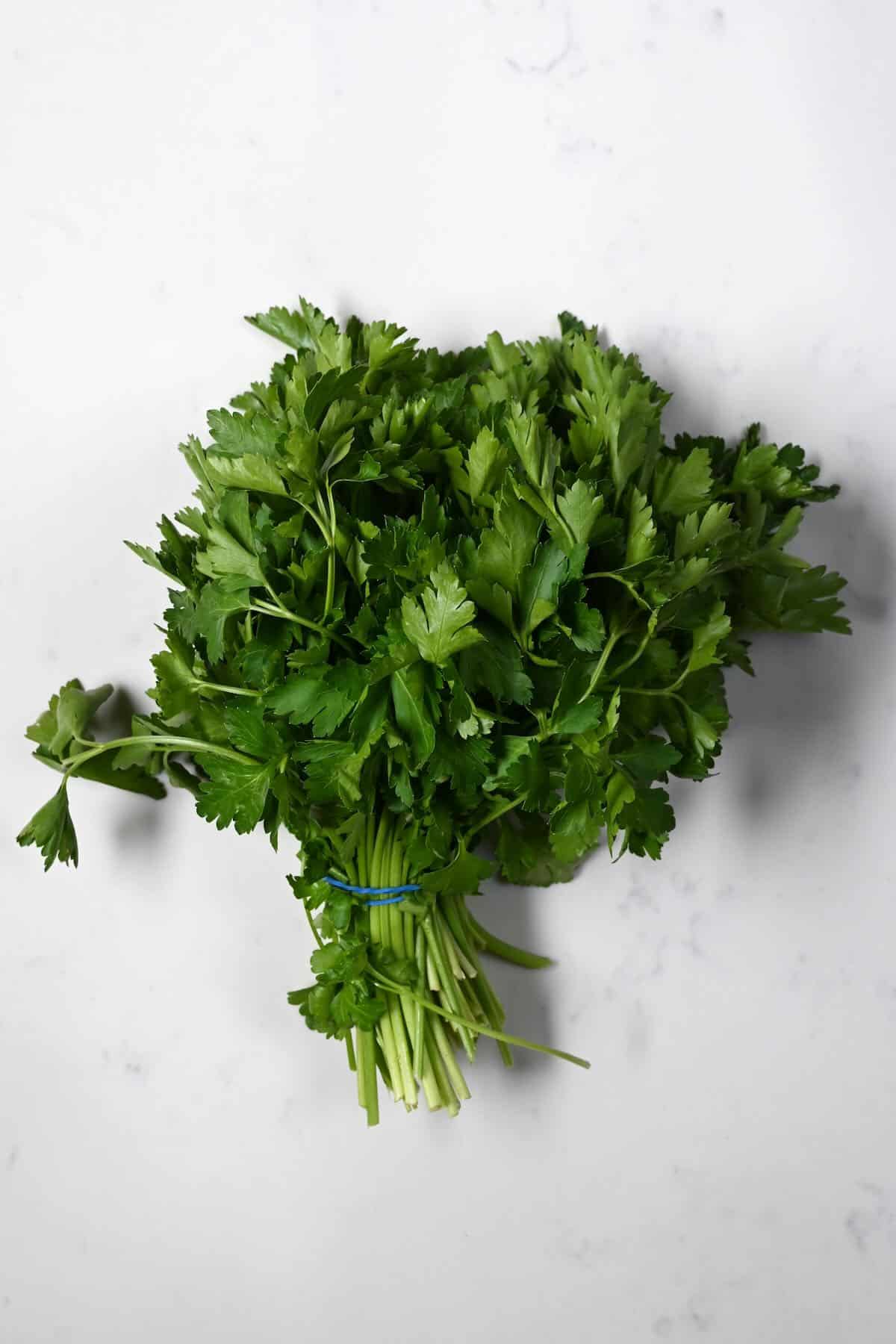
What Is Cilantro
Also known as coriander, cilantro is infamous for its taste. For some people, a genetic disposition makes cilantro taste like soap! With a citrusy, fragrant flavor (for those who don’t taste soap), the cilantro plant (coriandrum sativum) is believed to date back thousands of years, with some historians noting its use in the food of the Romans and the Egyptians.
The smell of cilantro is close to garlic – it’s sharp and strong. Some people can’t even stomach the cilantro smell – these may be the ones predisposed to tasting it differently from others!
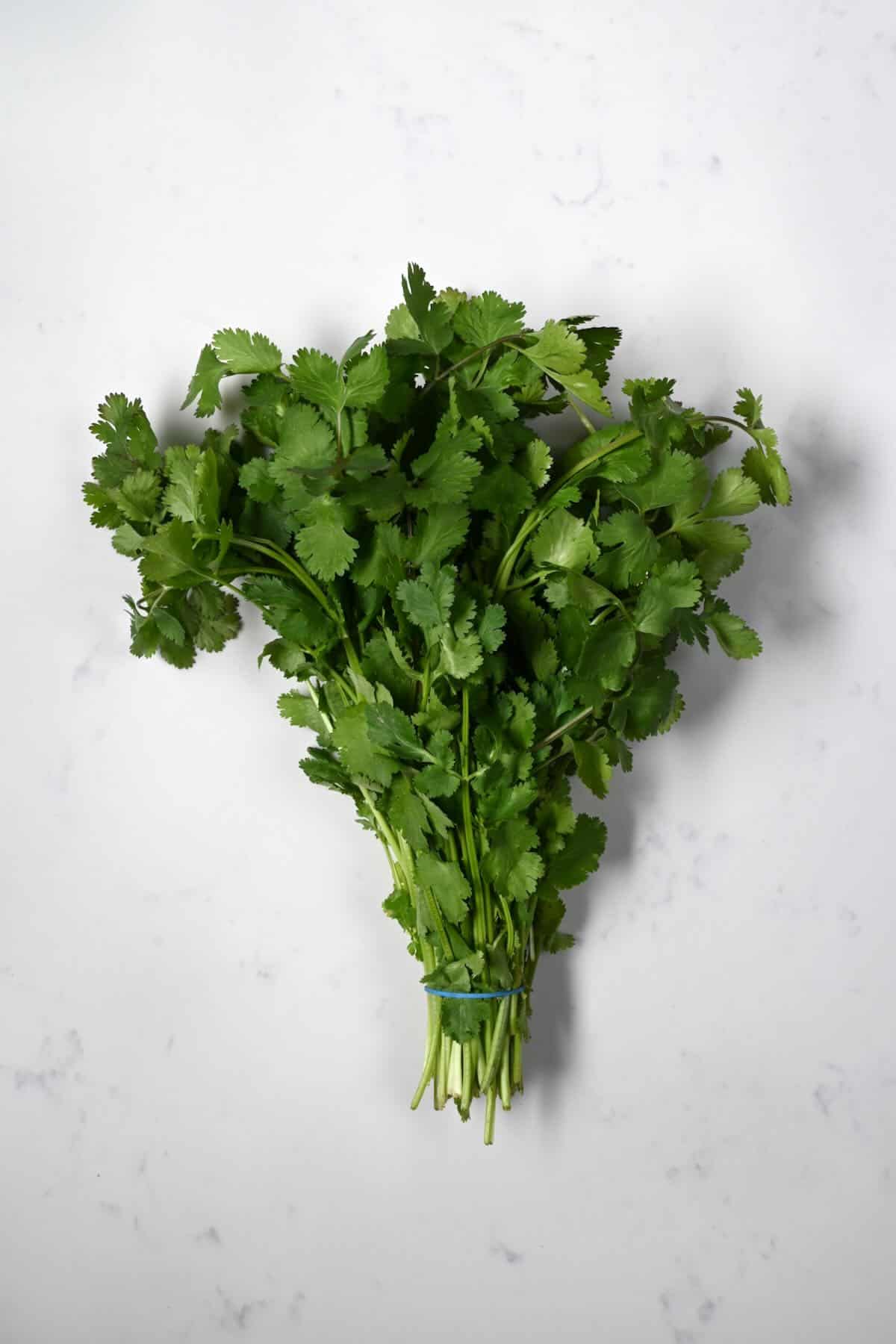
How to Tell the Difference Between Parsley and Cilantro
The key way to understand the difference between parsley and cilantro is to look at their leaves. Though these two herbs come from the same family, their leaves are what tell them apart.
When examining parsley leaves vs cilantro leaves, the former will have pointed tips that fan out and the latter will have a rounded shape.
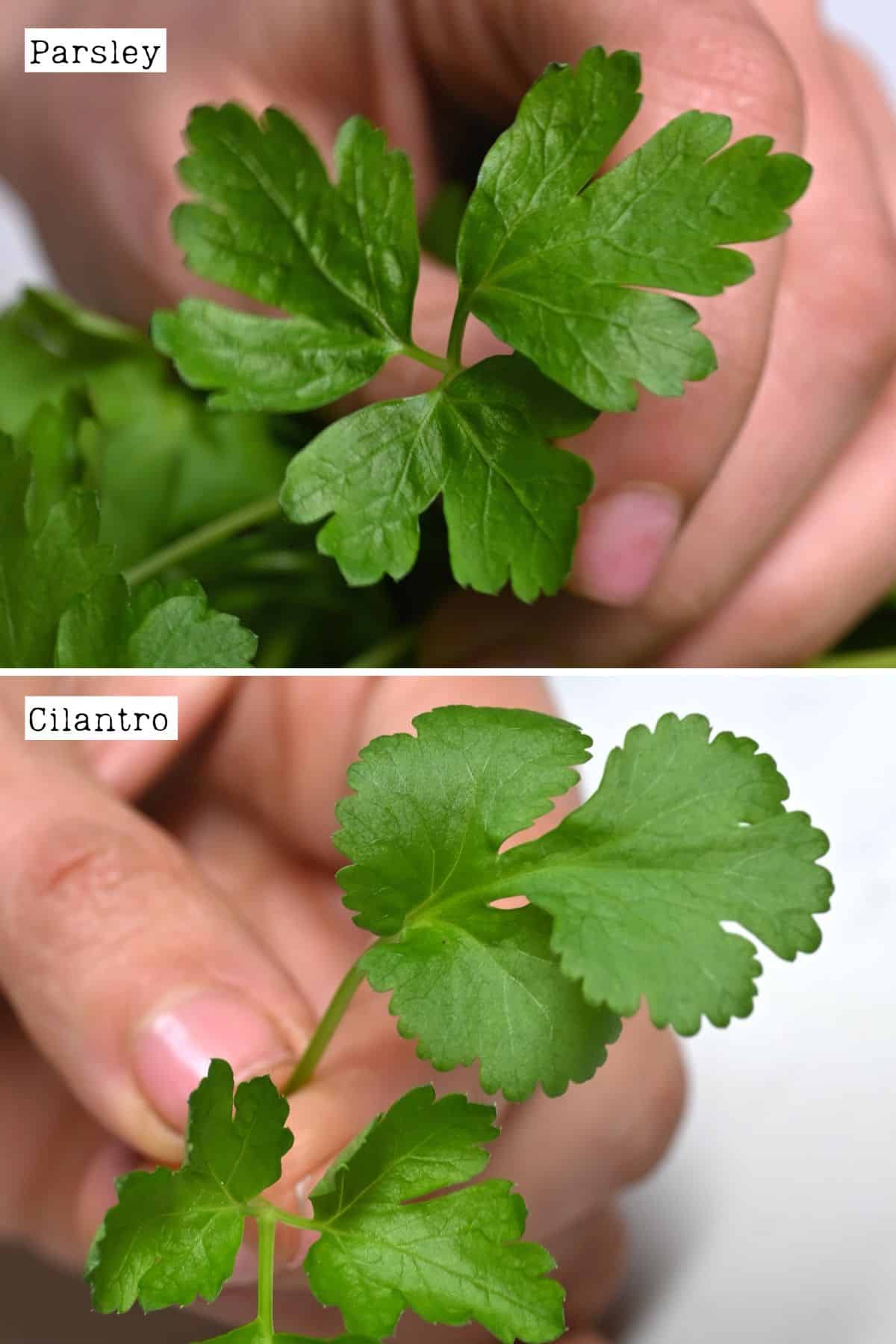
You can also tell the difference between the leafy green herbs by smelling them. The scent of parsley is far more subtle than cilantro; it’s fresh and mild compared to the spicy, garlicky smell of cilantro.
Great Recipes When You Have a Lot of Fresh Parsley
It’s easy to dismiss parsley – especially fresh parsley – as just an extra garnish. But there are plenty of recipes with parsley that make this mild herb shine – and it shows in its versatility (you can use both the stems and leaves).
Indeed, you can do so much more with fresh parsley than garnish your food – you can put it into sauces, salads, turn it into pesto, put it in soups, pasta sauces, marinades, veggie omelets, herb butter, roasted vegetables, lentil vegan meatballs or other meat and fish dishes.
These are some of my favorite ways to use parsley:
If you have any leftover fresh herbs, make sure to dry parsley for longer storage.
Ways to Use Cilantro in Cooking
Recipes with cilantro tend to have lots of flavor, blending sharp citruses with earthier spices so the herb really gets to shine – without detracting from the flavor profile of the dish. It’s heavily integrated into Mexican, Indian, and Southeast Asia cuisines over other herbs – think salsas, guacamole, soups/stews, salads, marinades, tacos, chutneys, and dressings.
Here are some great ideas for cilantro dishes:
- Cilantro Lime rice,
- Avocado Cilantro Crema,
- Authentic Falafel and Baked Falafel,
- Jackfruit Tacos,
- Roasted Tomato Salsa,
- Sautee with fava beans.
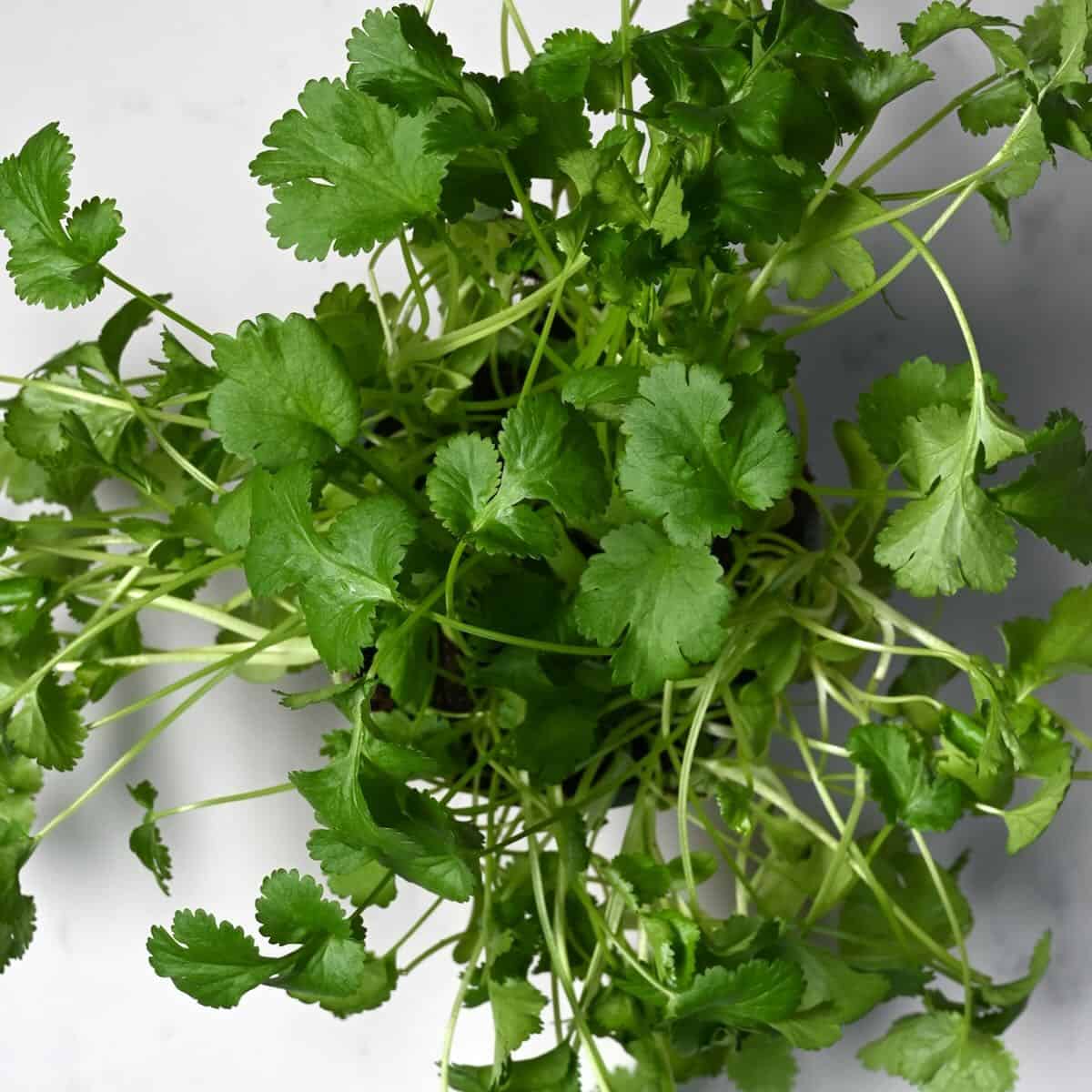
Let me know in the comments below what your favorite recipes with these green-colored ingredients are. Which types of parsley – curly or flat-leafed parsley – do you prefer? Do you like cilantro?
More Informative Posts
- How to Eat an Artichoke
- How To Make AquaFaba
- A Guide to Romaine Lettuce
- How to Cut Green Onions
- How to Eat and Store Radish Greens
- Chives Vs Green Onions
Let me know your thoughts and questions about parsley vs cilantro in the comments below. Also, I’d love to see your recipe recreations – tag me on Instagram @Alphafoodie!


